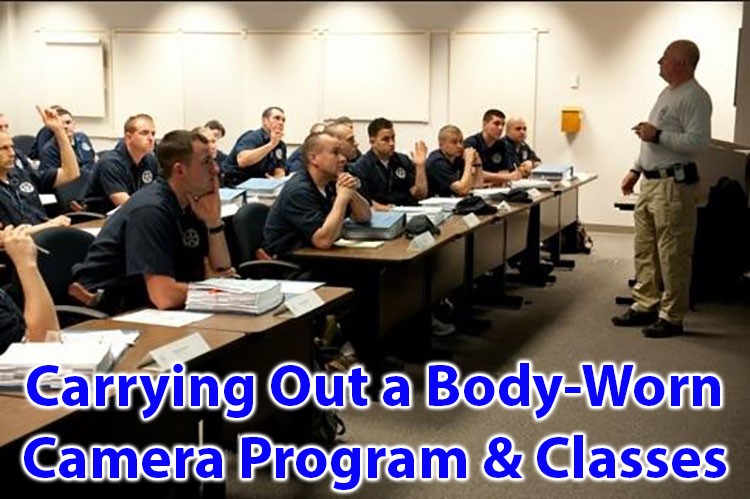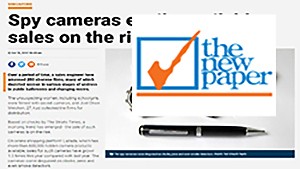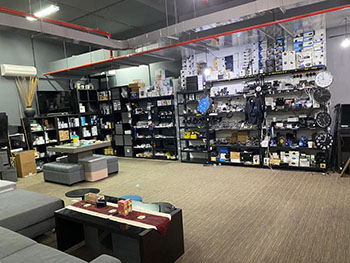Carrying Out a Body-Worn Camera Program and Classes
The body-worn camera has been around for quite a while and has had its ups and down, in the course of the past few years. The law enforcement agencies particularly the police have had to carry out more research on how much help the implementation of body cameras has helped. There has also been a need to thoroughly access the situation, cancel some actions while also modifying some others. The major challenge that has always come up concerning the body camera has always been privacy issues and lack of trust in what is being done with the video footage in the end. In this writing, we would discuss the perceived benefits of the body cameras and the consideration comes with must be quickly addressed. These generally provide very understandable recommendation that shows the promising practices and the lesson learned.
Benefits of using the body-worn camera
In the police force where body-worn cameras are used, there are some advantages they say the body cameras bring and this overall perception brings to the public. Some of these benefits include:
- Level of evidence documentation: the value of the evidence that is now available for investigation and also prosecution, has improved tremendously making it very easy to go ahead with. Once enough evidenced by footages are seen and presented, it becomes very easy to decide on these cases.
- Agency transparency: by allowing even the public to have access to video evidence and footage recorded, the relationship between the public and the police force is now stronger than ever. Now that the public sees how transparent the police force is and are willing to show them everything relating to a case, it has built a state of trust in them.
- Confrontational situations: the self-awareness people build when they become aware that they are being recorded has really helped develop good behavior in both the civilians and the police officers. Everyone surely wants to act well and comply well when they know they are being recorded, it is unknown to anyone what level of investigation it might be used for. It is always best to avoid bad behavior just to avoid later complications.
- Identifying and correcting internal agency problems: the use of body cams have made it easier to flush out the bad eggs from the force, this particularly includes those who; use their power to oppress, use the police uniform to get freebies, use the uniform for felony or fraud and even use their badge to get unlawful access to places they shouldn’t be. Having the body cameras helps give away all of these and appropriate sanctions can be placed.
- Resolution of officer-involved incidents and complaints: There are times when charges are pulled against a police officer and it becomes hard to judge who is telling the truth. With the body cam, it becomes really easy to prevent footages that can exonerate either of the two party’s involved. Having evidence such as these can provide more accurate records of the event that occurred.
- Officer performances: The overall performances of the officers are improved tremendously since self-awareness is greatly increased then officers are always on their best behaviors hence promoting good behaviors at all times. Making the officer training and regulation much more effective and less rigorous.
Policy consideration and recommendation
It is important that agencies develop very comprehensive written policies prior to implementing a body-worn camera program. Having these policies guide the use of the body-worn cameras is paramount, complications might arise from the implementation of the body cam as a lot of problems especially privacy issues. As these policies are rolled out they must be specific enough to provide very clear and consistence guidance but essentially still allow room for flexible adjustments as the program evolves. During the development of these policies, it is very important to have a sit-down agreement with the supervisors, legal advisors, police unions, prosecutors, community and the frontline officers as this is useful. It is the role of the agencies to make the policies available to the public.
There are many concerns that body-worn cameras raise as that agencies must take into account as they formulate their policies. One of the many effects that should be noted is that on the privacy and community relationships, the expectations created by the cameras concerns raised by the officers on the front line of duty and then finally its financial cost. The following are recommendations based on the research of PERF and the cops office. Agencies adopting them should fit them to their own needs, resources, legal requirements and also their philosophical approach. These recommendations are:
- Officers should be allowed to review video footage of an incident that involves them before making a statement of the incidents, a police officer re-watching footage usually helps recollection and better and more informed documentation of an event that occurred. Recording real-time is considered the very best evidence as what you record is also seen immediately and is not affected by stress. The majority of the police officers from PERF that sat to give this recommendation actually agreed to officers asking for favors allowing them to review these circumstances. All of this move is to ensure better evidence with clarity.
- Policies must state the length of time in which recorded data can be kept when sorting footages it’s best if officers categorize them by the type of events they actually are, this is one of the best methods of classification. As for the duration of time that evidentiary footage can be kept are typically judged and decided by state law governing that area. While the non-evidentiary data the agency should consider the need to preserve the footage in order to promote transparency and to also investigate complaints, the majority of the PERF agreed to keep data for 60-90 days before it is deleted.
- Officers who fail to record on camera an activity that is required by the departmental policy to be recorded must speak while being recorded on why they did not record such important events, this is a means in actually holding officers accountable for their actions. It also helps the superiors to investigate irregularities they suspect might be happening around. It has become a very common requirement in court now, that video recordings must be submitted hence putting in a document the reason for not recording a video can help remove concerns about such an officer’s credibility.
- Officers are expected to obtain consent from victims of incidents before recording interviews with them, it is a very important step that officers ask for permission to record a victim. You really can’t just walk up to a victim start interrogating and while doing that recording. This a wrong move that could bring up court cases, and draw some serious issues. This should be avoided and permission should always be taken.
- With very limited exceptions, officers are required to always put on their cameras when responding to all in service calls and during all law enforcement encounters and every activity that might also occur while the officer is on duty, whatever policy is being implemented should define what activities are included in the body cam recordings, such as; arrests, searches and also interrogations. Whenever an officer is unsure of whether to record or not, it is best he records. It can always be deleted later, many agencies know it is quite impossible or even unsafe to record in some very tight situations hence they just ask them to make reports in writing formats or they could be asked to speak on camera. These documents can be used to vindicate them alter when they are summoned to defend their actions.
- Policies made should involve data handling and what can be done to it once there is access to it, there should be measures to prevent data tampering, deleting or even duplicating to use without proper validation. These data are sensitive and should be handled anyhow neither should it just be accessed by just anyone. It is very critical that the integrity and the security of video footage is well protected. Some strategies that might be employed to ensure this includes: the use of storage systems for data with inbuilt audit trails, asking for supervisors when downloading footage of an occurrence in which the officer requesting was involved and also conducting forensic research on the reviews made on this video footage.
- Agencies must have a particular protocol that must be consistent and clear when it comes to releasing recorded footages to the outside while releasing video footage to the public or to the press, the agency must comply with the state’s public disclosure law. It is recommended that a broad disclosure policy must be enacted to promote accountable and transparent actions. However, it is essential that agencies should take into consideration the privacy issues before deciding to release footage to the public. Many of these policies should include the prevention of unauthorized video access or even release.
The body-worn camera program in agencies is fast-growing, policies and these recommendations are quickly needed to guide things in the right path.









